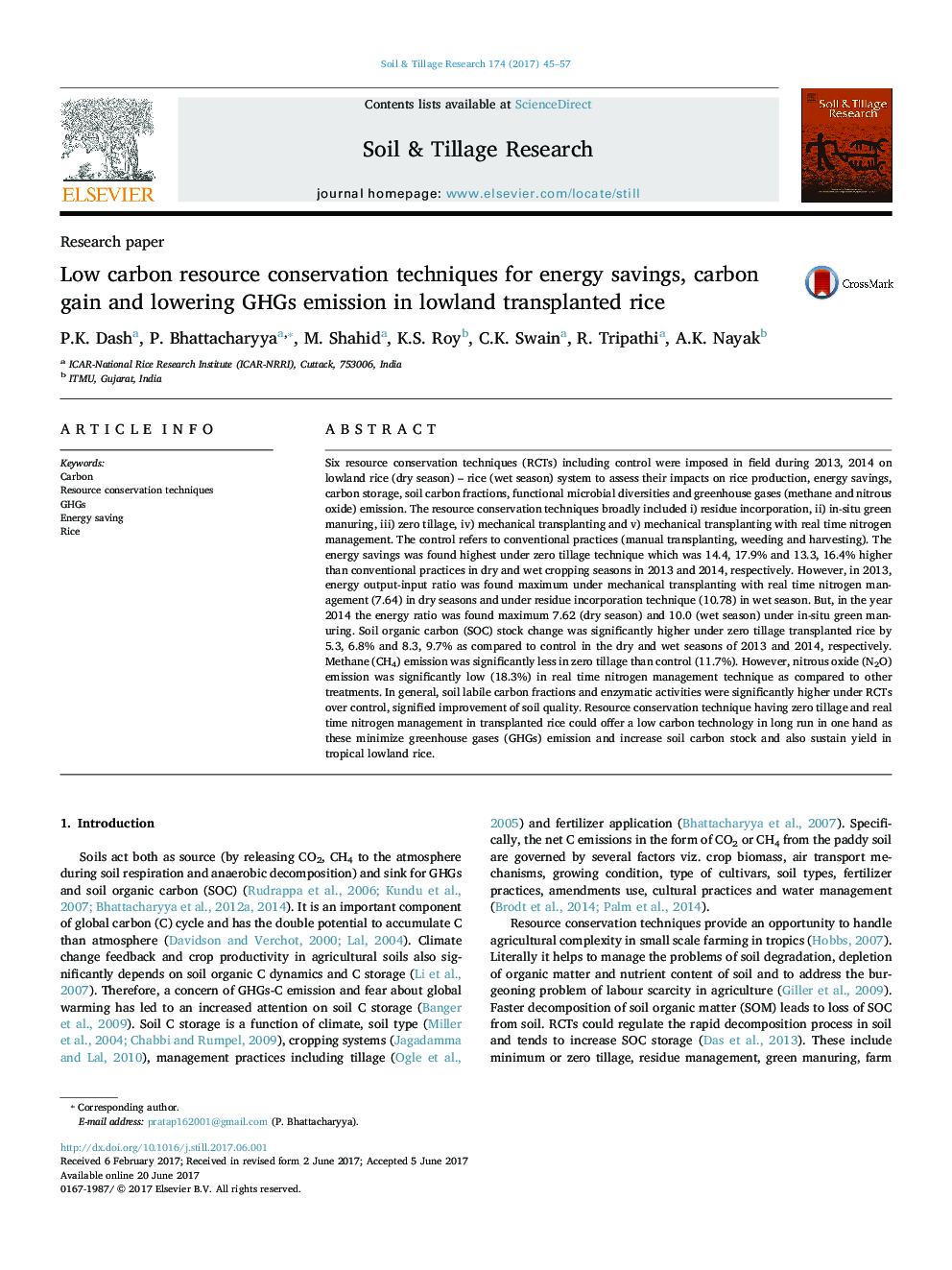| کد مقاله | کد نشریه | سال انتشار | مقاله انگلیسی | نسخه تمام متن |
|---|---|---|---|---|
| 4927453 | 1431829 | 2017 | 13 صفحه PDF | دانلود رایگان |
- ZT transplanted rice showed a trend to build up SOC and less CH4 emission.
- Crop residue/green manuring resulted higher yield but more GHG emissions.
- ZTÂ +Â CR retention had potential to build-up SOC and lower GHG emission.
- Energy saving was maximum in ZT among RCT but had yield penalties.
Six resource conservation techniques (RCTs) including control were imposed in field during 2013, 2014 on lowland rice (dry season) - rice (wet season) system to assess their impacts on rice production, energy savings, carbon storage, soil carbon fractions, functional microbial diversities and greenhouse gases (methane and nitrous oxide) emission. The resource conservation techniques broadly included i) residue incorporation, ii) in-situ green manuring, iii) zero tillage, iv) mechanical transplanting and v) mechanical transplanting with real time nitrogen management. The control refers to conventional practices (manual transplanting, weeding and harvesting). The energy savings was found highest under zero tillage technique which was 14.4, 17.9% and 13.3, 16.4% higher than conventional practices in dry and wet cropping seasons in 2013 and 2014, respectively. However, in 2013, energy output-input ratio was found maximum under mechanical transplanting with real time nitrogen management (7.64) in dry seasons and under residue incorporation technique (10.78) in wet season. But, in the year 2014 the energy ratio was found maximum 7.62 (dry season) and 10.0 (wet season) under in-situ green manuring. Soil organic carbon (SOC) stock change was significantly higher under zero tillage transplanted rice by 5.3, 6.8% and 8.3, 9.7% as compared to control in the dry and wet seasons of 2013 and 2014, respectively. Methane (CH4) emission was significantly less in zero tillage than control (11.7%). However, nitrous oxide (N2O) emission was significantly low (18.3%) in real time nitrogen management technique as compared to other treatments. In general, soil labile carbon fractions and enzymatic activities were significantly higher under RCTs over control, signified improvement of soil quality. Resource conservation technique having zero tillage and real time nitrogen management in transplanted rice could offer a low carbon technology in long run in one hand as these minimize greenhouse gases (GHGs) emission and increase soil carbon stock and also sustain yield in tropical lowland rice.
Journal: Soil and Tillage Research - Volume 174, December 2017, Pages 45-57
